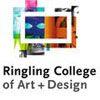
What are the top graphic design school programs in the US?
| Ranking | School | State | % |
|---|---|---|---|
| 1 | Rhode Island School of Design | Rhode Island | Top 1% |
| 2 | Maryland Institute College of Art | Maryland | 1% |
| 3 | Carnegie Mellon University | Pennsylvania | 1% |
| 4 | Yale University School of the Arts | Connecticut | 1% |
| 5 | Parsons The New School for Design | New York | 1% |
| 6 | Pratt Institute | New York | 1% |
| 7 | Cooper Union | New York | 1% |
| 8 | ArtCenter College of Design | California | 2% |
| 9 | School of Visual Arts | New York | 2% |
| 10 | California Institute of the Arts | California | 2% |
| 11 | California College of the Arts | California | 2% |
| 12 | School of the Art Institute of Chicago | Illinois | 2% |
| 13 | Savannah College of Art and Design | Georgia | 2% |
| 14 | Virginia Commonwealth University | Virginia | 2% |
| 15 | North Carolina State University at Raleigh | North Carolina | 3% |
| 16 | University of Texas at Austin | Texas | 3% |
| 17 | University of North Texas | Texas | 3% |
| 18 | University of California Los Angeles | California | 3% |
| 19 | University of Illinois at Chicago | Illinois | 3% |
| 20 | Columbia College Chicago | Illinois | 3% |
| 21 | Arizona State University | Arizona | 3% |
| 22 | Rochester Institute of Technology | New York | 3% |
| 23 | Kent State University | Ohio | 4% |
| 24 | The University of the Arts | Pennsylvania | 4% |
| 25 | Ringling College of Art and Design | Florida | 4% |
| 26 | College for Creative Studies | Michigan | 4% |
| 27 | University of Cincinnati | Ohio | 4% |
| 28 | University of Washington | Washington | 4% |
| 29 | University of Illinois at Urbana | Illinois | 4% |
| 30 | Otis College of Art and Design | California | 5% |
| 31 | Minneapolis College of Art and Design | Minnesota | 5% |
| 32 | Portland State University | Oregon | 5% |
| 33 | Kansas City Art Institute | Kansas | 5% |
| 34 | Auburn University | Alabama | 5% |
| 35 | Clemson University | South Carolina | 5% |
| 36 | Fashion Institute of Technology | New York | 5% |
| 37 | The Ohio State University | Ohio | 5% |
| 38 | Appalachian State University | North Carolina | 6% |
| 39 | Massachusetts College of Art and Design | Massachusetts | 6% |
| 40 | Iowa State University | Iowa | 6% |
| 41 | University of Georgia | Georgia | 6% |
| 42 | University of Tennessee | Tennessee | 6% |
| 43 | Colorado State University | Colorado | 6% |
| 44 | Louisiana State University | Louisiana | 6% |
| 45 | Brigham Young University | Utah | 7% |
| 46 | California State University Long Beach | California | 7% |
| 47 | East Carolina University | North Carolina | 7% |
| 48 | University of Houston | Texas | 7% |
| 49 | San Diego State University | California | 7% |
| 50 | Oregon State University | Oregon | 7% |
Our 2019 list of the Top 50 Graphic Design School Programs in the US. We considered 736 colleges with graphic design programs for this year's rankings. For an explanation of ranking criteria, click here.

Founded in 1877, Rhode Island School of Design (RISD) is one of the first art and design schools in the U.S. This private art and design school serves approximately 2,480 students from across the U.S. and 57 other countries, enrolled in 32 graduate and undergraduate art and design programs leading to a BFA, MFA, five-year Professional Baccalaureate, or a Bachelor of Architecture. Aspiring graphic designers have two options—a BFA or MFA.
One of the largest departments at RISD, Graphic Design offers “countless opportunities to collaborate within and beyond the discipline,” thanks to access to approximately 165 undergraduate majors. The MFA program offers the same opportunity, as well as two tracks: a two-year option designed for students entering with undergraduate degrees in graphic design or other visual communication, and a three-year option designed for students with degrees in liberal arts, the sciences or fine arts.
An impressive 96% of all RISD graphic design graduates are employed one year after graduation. 70% are employed in positions directly related to their major.

Founded in 1826, Maryland Institute College of Art (MICA) is the oldest degree-granting college of art in the nation. The school serves nearly 3,500 undergraduate, graduate, and continuing studies students from 49 states and 65 countries in fine arts, design, electronic media, art education, liberal arts, and professional studies degree and non-credit programs. MICA’s more than 80 art and design programs lead to either a BFA, MA, MFA, MPS or Certificate.
Programs for aspiring graphic designers include a BFA in Graphic Design with three Concentrations including Graphic Design Studio, Book Arts Studio, and Graphic Design + Humanistic Studies, an MA in Graphic Design (GDMA) and an MFA in Graphic Design (GD MFA).
The undergraduate graphic design curriculum at MICA features a three-year sequence of core design courses, while the 60-credit MFA program features two years of full-time study that combines “critical seminars, guided studio courses, and independent work.” Per the school, students in the MFA program may choose a concentration in Critical Studies or Curatorial Practices or “take advantage of electives in many MICA departments, including video, printmaking, and digital media.”
The MA program prepares students for advancing their careers and/or for applying to the competitive MFA. Program highlights include an “intensive introduction to design,” provided by the GDMA Studio, “taught with a strong emphasis on design fundamentals, process, visual research, and working across media,” a Design Theory and Practice Seminar, and the GDMA Workshop. Through the workshop, GDMA students will have the opportunity to create and exhibit a self-directed design project and a professional portfolio.

Founded in 1900, Carnegie Mellon University (CMU) is a global research university that serves approximately 14,625 students from more than 100 countries. The school offers more than 100 programs across seven colleges and schools. The College of Fine Art, School of Design, offers a Bachelor of Design (BDes), formerly BFA, with three tracks: Products, Communication and Environments. Students may focus in one or all three areas or pursue a more interdisciplinary focus that combines two of the three.
Other undergraduate options include the Minor in Design Application and the Undergraduate Interdisciplinary Degree known as “BXA,” which provides students with the ability to evenly balance their study of humanities or sciences with design. While BXA majors may take 26 design courses and 15 outside courses, most BXA students take 12 design courses, with the balance of their courses taken outside of the School of Design.
The Minor is for students admitted to other programs on campus who are interested in gaining “fundamental design skills and/or exposure to design.” Graduate options include a one-year Master of Arts (MA) in Design program, a one-year Master of Professional Studies (MPS) in Design for Interactions, a two-year Master of Design (MDes) in Design for Interactions program, and a PhD in Design Studies.

Founded in 1701, Yale University is home to more than 12,300 students enrolled in dozens of programs in the areas of art, architecture, divinity, drama, forestry and environmental studies, law, management, music, public health, and more. The school, which houses more than 145 departments and schools, is home to one of the most prestigious fine arts schools in the U.S. Established in 1869, the Yale School Art was the nation’s first art school connected with an institution of higher learning.
With an enrollment of more than 100 students, the Yale School of Art offers MFA degrees in Graphic Design, Painting and Printmaking, Photography, and Sculpture. An interdisciplinary Film & Video program is also available.
The Yale Graphic Design MFA (Yale GDMFA) is a competitive, 60 credit hour program that accepts just 10 students each year and up to seven students into the preliminary-year program. Per the School, MFA applicants are expected to have “substantial and distinguished experience in visual studies and related professional experience.” Students can expect support for their graphic design collections in several ways including, “studio work led by faculty meeting weekly, small five- or six-person thesis groups meeting biweekly and individual sessions with writing and editing tutors.”
Lectures, presentations, and workshops are also part of the program as well as access to “extraordinary” resources including Yale University courses, conferences, films, lectures, museums, and the “extensive” research and rare book collections of Sterling and Beinecke libraries. The Yale Graphic Design MFA takes two years to complete, full-time.

Founded in 1896, Parsons The New School for Design is home to nearly 5,500 students enrolled in 27 undergraduate, graduate, and associate degree programs. Parsons houses five schools, including the School of Art and Design History and Theory, the School of Art, Media, and Technology (AMT), the School of Constructed Environments, the School of Design Strategies, and the School of Fashion. The School of Art, Media, and Technology offers several degree programs for aspiring graphic designers. Offerings include an AAS in Graphic Design, a BFA in Communication Design, and an MPS in Communication Design.
The AAS program provides a “solid foundation in the traditional practices and concepts of graphic design,” while the BFA covers typography and interaction. Sponsored projects are in the areas of publication, interaction design, branding, advertising, type design, information design, motion graphics, and environmental design.
The one-year, 30 credit hour MPS program offers a concentration in Digital Product Design. Per the school, the program “combines instruction in advanced interaction design with coursework that develops your user-experience, design-thinking, and collaboration abilities.” Students will graduate with “industry-ready conceptual and front-end development skills and a network of design professionals to help” them “advance in or enter a rapidly growing field.” Career opportunities include Interaction Design, User Experience (UX) Design, Digital Product Design, and Product Management, to name a few.
Note that Parsons also offers a Graphic and Digital Design Certificate through its continuing education department. The program, which consists of six courses, can be completed online or through a combination of online and on-campus courses.

Founded in 1887, Pratt institute is home to more than 4,800 students enrolled in more than 20 undergraduate degree programs, 25+ graduate degree programs, and a variety of Certificate and Minor programs across five schools and The Center for Continuing and Professional Studies. Founded in 2014, The School of Design offers “up to four of Pratt’s oldest and most esteemed disciplines,” including Communications Design, Fashion Design, Industrial Design, and Interior Design.
Per the School of Design, the Communications Design program is the “the only program in the country that recognizes and embodies the convergence and integration of Illustration, Advertising, and Graphic Design as the primary forces for the visual expression of ideas.” Students may Concentrate in any of three areas (Illustration, Advertising Art Direction, Graphic Design). The undergraduate program for aspiring graphic designers leads to a BFA in Communications Design with a Graphic Design Emphasis.
The School of Design also houses the Graduate Communications Design Department, which also offers an MFA in Communications Design and an MS in Package Design.
For students who are not yet ready to commit to a degree program, the School of Continuing and Professional Studies (SCPS) offers Certificate Programs in Digital Design including Graphic Design, Computer Graphics, Motion Graphics and others. These programs may be taken individually or “stacked,” producing an “accelerated path to completion.” Like the undergraduate and graduate Communication Design programs, Certificate programs offer the opportunity to complete an internship.
Students in all programs will have the opportunity to enroll on one of more than 20 study abroad programs and international exchange programs in over a dozen locations such as Florence, Milan, Copenhagen, London, and Tokyo.

The Cooper Union for the Advancement of Science and Art (CU) was founded in 1859 by inventor, industrialist and philanthropist Peter Cooper. The school offers programs in the areas of Art, Architecture and Engineering, and courses in the Humanities and Social Sciences. With nearly 1,000 students enrolled (2017-2018), CU’s art students account for 32% of the student body.
The School of Art at Cooper Union offers a flexible BFA in Art with a Specialization in Graphic Design. Students in the program may take elective studio classes and seminars, offered on a rotating basis, they may choose to focus their work in one or more areas of specialization, and they may enroll in advanced studio classes with the same course number multiple times. Students are also “encouraged to follow an integrated approach by selecting from various areas while observing a prerequisite system designed to allow in-depth study in specific disciplines.” Other program highlights include Internship opportunities and study abroad opportunities.

Established in 1930, ArtCenter College of Design spans two campuses and four structures in the U.S. and Berlin. Home to approximately 2,100 students from the U.S. and more than 40 other countries, ArtCenter offers 11 undergraduate and seven graduate degrees in the areas of Industrial Design and Visual and Applied Arts. ArtCenter also offers a joint MS/MBA program with Drucker School of Management—the business school of Claremont Graduate University.
Programs for aspiring graphic designers include a BFA in Graphic Design and an MFA Graduate Graphic Design (MGx) degree. Students might also consider interdisciplinary programs such as the Desginmatters Concentration, which leads to a Certificate in Art and Design for Social Impact or the Integrated Studies Program, which covers essential skills and competencies, critical thinking and the creative process, cultural literacy and contextual reference, interdisciplinary experience, and quality of execution and professional practices.
Offered through the Graphic Design Department (GX), all programs offer internships and study abroad opportunities.

Founded in 1947 as “Cartoonists and Illustrators School,” School of Visual Arts (SVA) serves nearly 4,300 students from across the U.S. and abroad. The school offers 11 undergraduate and 21 graduate degree programs in areas ranging from fine arts and graphic design to filmmaking and photography. The programs at SVA lead to a BFA, MFA, MA, MAT or MPS degree.
Offerings for aspiring graphic designers include a BFA in Graphic Design that consists of 72 credits of studio art courses, 30 credits in humanities & sciences, 12 in art history, and six elective credits. An internship is part of the program, as well as the opportunity to focus in Package Design, Editorial Design, Information Graphics, Corporate Identity, Publication Design, CD Packaging, Book Jacket Design, Environmental Design, or Website Design.
Students who would like to earn an advanced degree have several options including an MFA in Design and an MFA Design/Designer as Author + Entrepreneur. Per the school, the MFA in Design “emphasizes entrepreneurship as an alternative to conventional practice, and as a means to raise the level of design expertise and achievement. It teaches “a broad set of visual, verbal and textual approaches as foundation for design, and focuses on “creation to optimize the designer’s abilities to rise to the next professional level.”
The MFA Design/Designer as Author + Entrepreneur Program “was the first in the country to emphasize an entrepreneurial course of study that raises the level of design expertise and achievement.” The program is “suited for students and professionals with backgrounds in graphic design.” The school also encourages “those with environmental, product, Web, interaction design, film and photography backgrounds who are interested in further developing their ability to create content of value.”
All graduate students have access to SVA MFA studios, which are open 24 hours a day and “designed to simulate an operational design/media firm with spacious work-stations that allow for individual and collaborative work.”

California Institute of the Arts (CalArts) is the nation's first postsecondary institution to offer graduate and undergraduate degrees in both the Visual and Performing Arts. Established in 1961 by Walt and Roy Disney, the school is home to around 1,500 students enrolled in more than 70 programs across six schools including the Schools of Art, Critical Studies, Theater, and Film/Video, the Herb Alpert School of Music, and the Sharon Disney Lund School of Dance. The School of Art is home to the Graphic Design program, which leads to a BFA or MFA.
The BFA program is a full-time, four-year program that prepares students for a career in print and publication design, web and interface design, motion graphics for broadcast and film, branding, identity and type design, and design history and education. The MFA program offers two- and three-year options, including a Specialization in Motion Graphics. The Specialization prepares students to enter the commercial field of motion graphics.

Founded in 1907, California College of the Arts (CCA) is home to more than 1,900 students from 52 countries and 45 states. The school offers 22 undergraduate and 12 graduate degree programs, plus two minors. Undergraduate programs for aspiring graphic designers include BFA degrees in Graphic Design and Interaction Design and a BA in Visual Studies. Graduate options include an MFA in Design that focuses on Graphic Design, Industrial Design, and Interaction Design.
Highlights for all programs include the opportunity to immerse in the areas of Brand Identity, Print, Motion Graphics, and Screen-Based and Interactive Design, elective offerings that will “strengthen” students “design toolkit,” and the opportunity to gain real-world experience through CCA’s extensive internship program. Graduates have landed positions at innovative design firms, museums, publishing houses, technology companies, nonprofits, and more.

The School of the Art Institute of Chicago (SAIC) was founded in 1866 as the Chicago Academy of Design. It is one of the oldest accredited independent schools of art and design in the country. Home to 3,650 students enrolled in more than 25 programs, SAIC offers several programs for aspiring graphic designers through its Visual Communication Design Department. Options include a BFA, MFA or Certificate in Graphic Design.
The BFA program has two major areas of focus including Physical Media (print, objects, and environments) and Virtual Media (interactive and time-based media). The MFA program offers the opportunity to explore other related departments at SAIC such as Printmedia, Writing, Photography, Architecture, Interior Architecture, and Designed Objects, and Film, Video, New Media, and Animation (FVNMA). The purpose of this opportunity is to “extend students’ design work into new territories.” The Graphic Design Certificate is designed for “students with an interest in exploring graphic design with an emphasis on print media,” says the Department.
Other Graphic Design Program highlights include an active AIGA (American Institute of Graphic Arts) student chapter, Exploratory Languages (a lecture series featuring leading designers and design educators from across the country), and CIPB (Chicago International Poster Biennial), which is an international competition representing leading designers from throughout the world. Internship opportunities and the option to study abroad are other highlights.

Founded in 1978, Savannah College of Art and Design (SCAD) is home to more than 14,000 students from all 50 states and more than 100 countries. The school offers more than 40 majors and 75 minors, as well as certificate and online programs. With campuses in Atlanta, Hong Kong, and Lacoste, France, SCAD has plenty of opportunities to study at domestic and international locations and it offers more graphic design programs than just about any other school on our list. Options include BA, BFA, MA, and MFA degrees in Graphic Design and a Design Management MA. A Minor and a Certificate are also available.
All programs highlight Product Packaging, Entrepreneurship, Mobile Technology, Interface Design and User Experience. Students have the opportunity to declare a double major in the areas of Advertising, Branded Entertainment, Illustration, Motion Media Design, Sequential Art and more, and access to Minors such as Mobile and Interactive Design and Advertising Copywriting. Students may complement their degree with Certificates in Digital Publishing or Interactive Design as well.
The BA degree is offered in Atlanta, Savannah and online and the BFA, MA, MFA, and Minor programs are offered in Atlanta, Hong Kong, Savannah, and online. The Certificate program is offered in Atlanta, Savannah and online.

Virginia Commonwealth University (VCU) was established in 1838. It is home to more than 31,000 students enrolled in more than 200 programs through 15 colleges and schools. The School of the Arts, which serves more than 3,000 students, offers 25 degree programs. An additional four programs are offered at VCU’s Qatar campus. The School of the Arts (VCUArts), Department of Graphic Design, has several programs for aspiring graphic designers. Options include BFA degrees in Graphic Design and Communication Arts, and an MFA with a Concentration in Design/Visual Communications.
Per the Department, students in the MFA program “concentrate on the philosophical, communicative, and aesthetic relationships of visual problem solving and the interacting skills leading to the effective articulation of concepts.” BFA students will take courses in the areas of Publication and Print Design, Sequential and Motion Design, and Interaction Design, “along with a series of related Studio and Seminar courses.” Both BFA options prepare students to create effective visual communications.

Founded in 1887, North Carolina State University at Raleigh (NC State) is home to around 35,480 students enrolled in 300 undergraduate and graduate degree programs. Known as “the school of 100+ startups and spinoffs,” NC State houses 12 colleges and 65 departments. The College of Design is home to the Graphic Design program which offers two degree paths—a Bachelor of Graphic Design and a Master of Graphic Design.
The College has recently established a PhD in Design/Information Design Concentration as well. The undergraduate and graduate degrees are NASAD (National Association of Schools of Art and Design) accredited and the PhD program is set to receive NASAD approval after graduating its first class.
Per the College of Design, students in the undergraduate program study comparative ideas about, and methods for, creating visual communication. Sequenced core studios, typography courses, and image-making courses “progressively introduce and develop skills, processes, and sensitivities across a range of media.” Graduate students will “closely examine the cultural and technological situatedness of graphic design and its products, and to seek understanding of the people who use and interact with the things that graphic designers make.”

The University of Texas at Austin (UT Austin) was founded in 1881. The school opened its doors in 1883 with one building, eight professors, one proctor, and 221 students. Today, UT Austin is home to nearly 52,000 students enrolled in over 500 degree programs and fields of study across 18 colleges and schools. The College of Fine Arts, Department of Art and Art History has several programs for aspiring graphic designers. Options include BA, BFA and MFA degrees in Design, and a BFA in Visual Studies.
Students in all programs have the opportunity to complete an internship, which may include working at major companies with offices in the Austin area. Just a few include Google, Dell, IBM, Apple, Samsung, Frog, Pentagram, and EA Games.

University of North Texas (UNT) was founded in 1890 as Texas Normal College and Teachers’ Training Institute. With 38,000 students enrolled, UNT is the fourth-largest university in Texas. The school offers 105 bachelor's, 88 master's and 37 doctoral degree programs across 11 colleges and schools. The College of Visual Arts & Design is home to the Design Department, which houses the Communication Design Program. Program options for aspiring graphic designers include BFA, MA, and MFA degrees in Communication Design.
The BFA program covers the basic principles of design, image making, color theory and typography. It is also designed to “help students learn to be effective conceptual thinkers and, most importantly, creative problem solvers in the disciplines of Advertising and of Graphic Design.” The 36 credit hour MA in Communication Design and the 60 credit hour MFA in Communication Design are both taught as concentrations in Design Research.
Students in all Graphic Design programs have the opportunity to complete an internship, study abroad, and access “valuable resources” consisting of over 1,000 reference books, magazines and paper/print samples of photography, illustration, typography, graphic design and advertising.

The University of California Los Angeles (UCLA) was founded in 1919 as the Southern Branch of the University of California. It is home to nearly 45,500 students from all 50 states and more than 100 foreign countries. The UCLA College and 12 professional schools offer more than 5,000 courses in 125 undergraduate degree programs, 98 master’s programs, 109 doctoral and professional programs, and 91 minors.
The School of Arts and Architecture is home to the Department of Design Media Arts (DMA), which offers both BA and MA degrees in Design Media Arts. Per the school, the DMA program “emphasizes innovative creation with digital and mass media within the context of a public research university.” The curriculum highlights “a solid foundation in form, color, space, motion, typography, and interactivity, followed by a broad selection of area studies courses in video, visual communication, network media, game design, and narrative.” The senior project allows students to focus on individual interests within the areas of Visual Communication and Image, interactivity and games, or video and animation.
“This uniquely challenging and diverse program invites students to balance aesthetic sensibility with logical reasoning, formal theories with practical application, and contemporary thought with historical perspective.” With courses that are taught as studios of no more than 22 students, individual growth and a sense of community within the department is encouraged.

The University of Illinois at Chicago (UIC) was formed in 1982 by the consolidation of two U. of I. campuses: the Medical Center campus, which dates back to the 19th century and the comprehensive Chicago Circle campus which replaced, in 1965, the two-year undergraduate Navy Pier campus that opened in 1946 to educate returning veterans. Serving nearly 31,700 students, UIC is the largest university in Chicago.
The school, which has regional campuses in Peoria, Rockford, Springfield, Urbana, IL, and The Quad Cities, offers 248 degree programs and 32 certificates across 15 colleges. The College of Architecture, Design, and the Arts houses the School of Design, which offers a Bachelor of Design (BDes) and a Master of Design (MDes) in Graphic Design.
The four-year BDes program highlights studio-based instruction, while the two-year MDes focuses on an independent master’s research project. A third option is the MDes Prelim Program. Offered to applicants who do not hold a bachelor’s degree in design, the Prelim Program is a customized yearlong program that prepares students for the two-year MDes.

Columbia College Chicago was founded in 1890 as the Columbia School of Oratory. The school offers a distinctive curriculum that blends creative and media arts, liberal arts, and business to nearly 7,000 students in more than 60 undergraduate and graduate degree programs. Programs for aspiring graphic designers include a BA and a BFA in Graphic Design. Per the school, BA students take fewer credit hours in the major and are encouraged to choose a minor or double major in another program such as Fine Arts, Photography, Advertising, or Motion Graphics.
BA students choose a concentration in one discipline such as Web Design, Publication Design, or a general concentration. The BFA requires more advanced courses in graphic design than the BA. Students in this degree track do not choose a concentration and take courses across disciplines including Web Design, Publication Design, and Visual Identity. A second BA in Graphic Design is available if a student has already earned a bachelor’s degree.
Students in both programs will have the opportunity to intern at firms such as Leo Burnett, one of the largest advertising agencies in the world, with clients like Procter & Gamble, Foote, Cone & Belding, a global advertising agency with clients around the world, Pivot Design, an award-winning branding, marketing, and advertising agency, Pressley Johnson Design, one of the premiere design communications firms in the Midwest, and 50000feet Creative Agency, a firm that has worked with some of the top brands in the U.S.

Founded in 1885, Arizona State University (ASU) is home to more than 100,000 students (2017) enrolled in over 290 academic undergraduate programs and hundreds of graduate programs across 17 colleges and schools. The Tempe campus is home to nearly 52,000 students, making it the largest campus in the ASU system.
The ASU Herberger Institute for Design and the Arts houses the Design School, which offers programs in the areas of Architecture, Environmental Design, Industrial Design, Interior Design, Landscape Architecture, Urban Design and Visual Communication Design/VCD (Graphic Design). Visual Communication Design (VCD) options include a BSD in Graphic Design, an MSD with a Concentration in Visual Communication Design (VCD MSD), and a Master of Visual Communication Design (MVCD).
The BSD allows students to work on projects in the areas of Information Design, Interaction Design, Exhibition Design, Animation, Motion Graphics, Branding, Publication Design, Web Design, Interface Design and multiple contemporary facets of sensorial design. The MSD for individuals interested in “advanced studies in visual language, history, theory, criticism and methodology, design processes and technology.” The degree “develops an understanding of contemporary graphic design issues through specialized research and design skills. It also prepares the graduate student for a career in graphic design education.”
The MVCD has two options—a two-year studio-based program and a 3+ program. The two-year studio program is designed for students with a degree in VCD or Graphic Design and a 3+ program is designed to be a first professional degree for those students who do not have an undergraduate degree in VCD or Graphic Design.

Founded in 1829, Rochester Institute of Technology (RIT) serves more than 19,000 across nine colleges emphasizing career education and experiential learning. The school, which has global locations in China, Croatia, Dubai, and Kosovo, offers several programs for aspiring graphic designers. Programs include a BFA in Graphic Design and an MFA in Visual Communication Design.
Offered through the College of Art and Design, School of Design, the BFA integrates major courses, studio and free electives, and liberal arts, as well as aspects of business, professional practices, computer-based skills, collaborative projects, and workflow. Students can expect to take courses such as 2D and 3D Design, Time-Based Design, Interactive Media Design, Web and User Interface Design, Branding and Identity Design, Design Systems and Methodology, and Experiential Graphic Design. All students in the BFA program will complete a portfolio and Senior Capstone Project.
The MFA in Visual Communication Design (VCD) is a 60 credit hour program composed of courses in Communication Design, Interactive Design, and Motion and 3D Digital Design. In addition, students are required to take Design History Seminar, Design Theory and Methods Seminar, and Professional Practices. Per the school, “seminars explore cross-disciplinary principles, theories and methods that can be used by designers. Through selected readings from current periodicals, critical writing, hands-on involvement, presentations and guest lectures, students will broaden their awareness of topics such as systems thinking, human factors, semiotic theory, and visual rhetoric.”
The MFA in VCD, which enrolls around 100 students, allows all eligible students to participate in an optional co-op program the summer between their first & second years. Some students may have the opportunity to participate during the fall and spring terms.

Kent State University (KSU or Kent State) was founded in 1910 and it is home to more than 38,000 students (in an 8-campus system) enrolled in more than 300 degree programs across dozens of colleges and schools. The College of Communication and Information, School of Visual Communication Design, offers several programs for aspiring graphic designers including BFA, MA, and MFA degrees in Visual Communication Design and a Design Minor.
Per the School, the BFA program consists of approximately two-thirds of the coursework in the "creation and study of the visual arts," with the remainder in general studies. Because of the greater emphasis on upper-level studio courses, the BFA allows majors the opportunity to build greater expertise in a given area of the field.
The MFA is one of only three programs in the state to offer the Master of Arts degree in Visual Communication Design and was the first to offer the terminal degree in the field, the Master of Fine Arts. The MA is a 32 credit hour program that prepares students to work in emerging markets such as social media, branding, digital media and user experience design. The MFA “serves students with a strong undergraduate and/or professional experience in design who wish to advance into leadership roles.” Graduates “typically pursue careers in design education, but also stand out in the industry for their ability to solve problems from a research-based design perspective.”
The Design Minor provides students with “grounding in the fundamental elements of graphic design, including design research and history, graphic software, industry standards and professional ethics.” All School of Visual Communication Design students must complete 300 hours of internship before graduation. Most internships are paid, and students have the opportunity to work at major companies across Cleveland and in Chicago, San Francisco and New York.

The University of the Arts (UArts) is the nation’s only comprehensive arts university. The school, which traces its roots back to 1868, is home to around 1,800 students enrolled in 47 undergraduate and graduate programs through the College of Art, Media and Design, the College of Performing Arts, and the Division of Liberal Arts. The College of Art, Media and Design houses the School of Design, which offers BFA degrees in Graphic Design and Design, Art + Technology, an MFA in Printmaking + Book Arts, and Minors in Book Arts, Typography, and Multimedia.
Students in the Graphic Design Program have the opportunity to choose courses from the Schools of Art, Film and Illustration or any cross-college program. All students have access to international opportunities such as study abroad, festivals, and workshops in countries such as Canada, France, and South Korea.

Ringling College of Art and Design (RCAD) was established in 1931 by circus baron, art collector, and real estate developer John Ringling. The school opened with 111 courses and just 75 students. Today, RCAD sits on a 35-acre campus and it is home to approximately 1,561 degree-seeking students from 43 states, DC, Puerto Rico, the Virgin Islands, Military Bases, and 58 countries.
RCAD offers a BFA in Graphic Design that prepares students to design “show-stopping solutions for print and interactive media.” Launched in 1980, the program allows students to collaborate with other artists such as copywriters, printers, photographers, illustrators, and developers to “make their ideas a reality.”
Graduates of the RCAD Graphic Design program have been hired by companies such as Google, Facebook, Adult Swim, CBS Interactive, ESPN, Apple iTunes, Leo Burnett, Microsoft, Yahoo!, American Greetings, IGN Entertainment, Wieden + Kennedy, Walt Disney Company, Birchbox, Inc. and many others.

The College for Creative Studies (CCS) was established in 1906 as The Detroit Society of Arts and Crafts. The school serves 1,425 students enrolled in over a dozen degree programs across 14 academic departments. With an enrollment of more than 100 students, the Graphic Design Department is the fifth largest department at CCS. Degree options for aspiring graphic designers include a BFA in Graphic/Communication Design, Interaction Design or Motion Graphics and MFA degrees in Interaction Design and Integrated Design. Degrees that complement Graphic Design include BFAs in Advertising: Copywriting, Advertising: Design and Fine Arts.
All students have the opportunity to study abroad for a semester or a year in places such as Italy, Austria, Germany, Mexico, Paris, Australia, and more. Graduates of the Design programs at CCS are prepared to work in Graphic Design, Editorial Design, Environmental Design, Information Design, Interactive Design, Package Design, Publication Design, Web Design, and many others.

Founded in 1819, the University of Cincinnati (UC) is home to nearly 46,000 students enrolled in 370 degree programs across 13 colleges and a graduate school. The College of Design, Architecture, Art and Planning (DAAP) houses the Myron E. Ullman Jr. School of Design, which offers a BS in Communication Design. The program, which takes five years to complete, offers three Concentration areas including Graphic Design, Motion Design, and Interaction Design.
Students in the BS program will take a broad range of courses such as Foundational Drawing and Design, Kinetic Communication, Typography, Photodesign, and Design Ideation. Courses are supplemented with general education requirements, directed electives, design history, and interdisciplinary courses in design thinking and user-centered design. Per the school, studios “will refine and develop specific or general skills and be enhanced with further study in design history, methodology, research methods, and global studies.”
Besides the BS in Communication Design, aspiring graphic designers might consider another program offered through UC’s Blue Ash College. The Art and Visual Communication Department here offers a two-year Associate Degree in Applied Graphic Communication. The program is designed for “students seeking foundational skills appropriate for further study in the design field or for employment in areas of design support.” Classes are small, so students receive considerable personal attention and direction from faculty. Though the program is a two-year degree, students may take up to three years to complete the program.

The University of Washington was founded in 1861. The Seattle campus is home to more than 44,600 students, enrolled in over 165 majors across 16 colleges and schools and in 79 departments. The College of Arts & Sciences is home to the School of Art + Art History + Design (SoA+AH+D), which offers a Bachelor of Design (BDes) in Visual Communication Design and a Master of Design (MDes).
One of the largest undergraduate programs at the University of Washington, Visual Communication Design emphasizes “visual problem solving, organizational skills, and information theory.” Students in the programs engage in all phases of typography, information design, design systems, exhibition design, publication design, new media, and visual methods/processes. Sample courses for the BDes include Typography, Human Centered Design, Color + Composition, Interface Design, Motion Design, Visual Systems, Information Design, and Publication Design.
Sample MDes courses include advanced Design Foundations, Design Methods, Typography, Industrial Design, Interface Design, Case Studies in Corporate Identity, Exhibition and Installation Design, Interaction Design, Information Design, Design Graduate Studio, and Graduate Student Teaching Mentorship.
Students in both programs will have the opportunity to compete for more than 100 seats in the SoA+AH+D study abroad program to explore art, art history, and design in an international context. Past students have studied in Rome, Japan, Spain, and Tuscany.

Established in 1867 as Illinois Industrial University, University of Illinois at Urbana – Champaign is one of the original 37 public land-grant institutions created after President Abraham Lincoln signed the Morrill Act. The school serves nearly 48,000 students through 15 colleges and instructional units. The College of Fine and Applied Arts, School of Art and Design offers a 122 credit hour Graphic Design program that leads to a BFA. A 64 credit hour MFA in Art and Design with a Concentration in Graphic Design is also available.
Per the school, students in the program “engage with complex problems and are asked to identify opportunities where design can intervene.” Studio work for the program “addresses graphic design fundamentals (typography and image making), design history and contemporary practices, research methods, user experience, and social responsibility.” Students also have the opportunity to refine their degree by choosing from an interdisciplinary selection of elective courses including advanced interaction design, photography, traditional printmaking, sustainability, and video, and the design of Ninth Letter, a nationally-distributed and award-winning literary arts journal.
MFA students have access to individual studio space and specialized resources “essential to the acquisition of a high-quality professional education.” The program requires a graduation exhibition of creative work and a written thesis and admission to the program is determined by a faculty review of a portfolio of the applicant's creative work, records of previous education and experience, letters of recommendation, and other significant achievements that may be viewed as predictors for success in the program.

Otis College of Art and Design (OTIS) was established in 1918 by General Harrison Gray Otis-- founder and publisher of the Los Angeles Times. Home to 1,100 BFA and MFA students, OTIS offers more than a dozen interdisciplinary art and design programs from Animation and Motion Design to Illustration and Graphic Design. Specific programs for aspiring graphic designers are offered through the Communication Arts Department. Options include BFA degrees in Graphic Design and Communication Arts with an Emphasis in Graphic Design or Illustration or a Minor in Advertising Design, an MFA in Graphic Design and a Graphic Design Certificate.
Graduates of the Graphic Design programs at OTIS have landed positions at major companies such as Apple, Anthropologie, LACMA, Guess, Metro, Capitol Records, and others.

Minneapolis College of Art and Design (MCAD) was established in 1886. The school serves 800 students enrolled in Design (50% of the student body), Media Arts (38%), 10% in Fine Arts, and the remaining 2% in MCAD’s new Arts Entrepreneurship Department. More than 20 programs are available across several departments, including a BFA in Graphic Design, Post-Baccalaureate Certificates in Graphic Design and Interactive Design and Marketing, and an MFA in Visual Studies. A 30 credit hour MA in Graphic and Web Design (online) is also available.
Per the school, students in the 120 credit hour BFA program will develop their own voice and produce original work, they will Research, engage with, and create innovative concepts, content, and form, and learn to communicate ideas visually. Students will also refine their technical and conceptual design skills in preparation for a professional career in graphic design.
The 60 credit hour MFA program allow students to pursue creative work in Graphic Design, Illustration, Interactive Media, Paper and Book Arts, Printmaking, and many others. Students in all graphic design programs have the opportunity to gain practical, real-world experience through a required internship. The option to study abroad or elsewhere in the U.S. is also highlighted.

Portland State University (PSU) opened its doors in the summer of 1946 to just 220 students. Today, the school spans 50 city blocks, and it houses nine colleges and schools, 226 degree programs, and more than 25,000 students. The College of Arts is home to the schools of Architecture, Art + Design, Music, and Theater + Film.
With 1,400 students enrolled, the School of Art + Design offers BA, BS, BFA degrees and Minors in areas from Art History to Graphic Design. The Graphic Design Program has two options including a BFA and a Minor. Program highlights include mostly studio-based courses, opportunities to engage in professional internships, and summer study abroad experiences such as Printmaking in Mexico and Art History in Rome.

Established in 1885, Kansas City Art Institute (KCAI) has a 130+ year history that includes notable name such as Walt Disney, who took classes there as a child, multimedia artist Robert Rauschenberg, who studied fashion design, writer Robert Morris, and performance artist and fabric sculptor Nick Cave, to name a few. Besides a long list of notable alumni and students, KCAI offers 14 academic disciplines in Art, Design and Media to a population of nearly 700 students.
Offerings for aspiring graphic designers include BFA degrees in Graphic Design, Interactive Arts and Printmaking. Per the school, the Graphic Design Program “goes beyond the traditional division between Web and print design to give students a cross-media skill set that adapts to context, audience and participant input.” The programs “rigorous approach to audience research, theory and conceptual problem-solving” helps position students as thought leaders in their chosen fields. KCAI design students “are exposed to professional practices, concepts and skills required to build rewarding careers.”
The Interactive Art BFA uses emerging technology as the “backbone of creation,” so students become “versed in software coding, physical computing and sensors, performance, games and play mechanics, rapid prototyping, user testing and experiential design.”
The Printmaking BFA covers the traditional printmaking processes and concepts including etching, lithography, drawing, collage, silkscreen, letterpress and book arts, as well as post-modern processes, including mass media, collaboration, simulation, appropriation and dissemination.
All programs offer access to KCAI’s internship program, three to five week long faculty-led travel programs, and full semester programs that can take them to one of several participating art and design colleges in the U.S. or overseas.

Established in 1856 as the East Alabama Male College, Auburn University is now home to a co-ed population of 29,776 students enrolled in more than 140 degree options across 13 colleges and schools. The College of Architecture, Design and Construction is home to in the School of Industrial + Graphic Design. Program offerings for aspiring graphic designers include a BFA in Graphic Design (BFA GDES).
The program emphasizes Fine Arts, Exhibitions, Identity Development, Logos, Visual/Digital Interface, Packaging, and Magazine Design. In addition, the school says, “students have excellent opportunities for internship and cooperative education experiences as a result of well established relationships with regional, national and international companies and firms.” Career opportunities range from “the development of strategies to implement large-scale communications campaigns, to the design of effective communication products such as magazines, logo and identity development, interactive media, web design, packaging, exhibitions, illustration, and environmental graphics.”
Auburn GDES is the only Graphic Design Program in Alabama to receive National Association of Schools of Art and Design (NASAD) accreditation.

Founded in 1889, Clemson University serves more than 23,000 students enrolled in more than 270 undergraduate majors, minors, and graduate programs through seven schools. The College of Business, Department of Graphic Communications offers a BS in Graphic Communications that the school says is “dedicated to hands-on learning experiences.” Students in the program are “placed in positions in a variety of printing, packaging, publishing, imaging and related industries in management, marketing, sales, customer service, creative, technical and scientific positions.” The school says that placement rates are “consistently high” with “competitive salaries.”
In addition to engaging in hands-on learning experiences, Graphic Communications students will take courses such as Digital Imaging and eMedia, Packaging Science, Ink and Substrates, Package and Specialty Printing, Commercial Printing, Technical Writing, Current Developments and Trends in Graphic Communications, and Marketing. Graduates of the program are prepared to enter the schools MS in Graphic Communications or seek positions in printing management, production planning and supervision, commercial and technical sales, and many others.
The MS in Graphic Communications includes 33 credit hours of graduate courses for the non-thesis option or 30 hours with a thesis. Within the total requirements, at least 17 hours will be in GC technical/managerial courses; seven will be research related; six credits will be from outside the Graphic Communications Department; and at least one-half will be at or above the 8000 level.
Graduates of the program are placed in positions in a variety of printing, packaging, publishing, imaging and related industries in management, marketing, sales, customer service, creative, technical, scientific and academic positions.

Fashion Institute of Technology (FIT) was established in 1944 as the Fashion Institute of Technology and Design.” The institute, which was located on the top two floors of the High School of Needle Trades, opened with just 100 students. Today, the school serves nearly 9,000 students enrolled in dozens of programs in the areas of Art and Design, Business and Technology, and Liberal Arts. The school also offers graduate programs in Art Market Studies, Illustration, and Exhibition and Experience Design, to name a few.
FIT offers a BFA in Graphic Design that highlights courses such as Designing Identities, Typography and Language, Design in the Cultural Context, Color Voyage, Type as Idiom, Graphic Design in Digital Media, Tangible Publication Design, Signage and Graphics, Graphic Design for Packaging, Graphic Design for Toy Designers, and Environmental Graphics.
Per the school, students in the program will work on “real projects for real clients in the Advertising Design Workshop.” They will also “gain first-hand experience through internships at major institutions and design firms, including MoMA, Pentagram, the Art Directors Club, and many others.” All students will have the opportunity to study abroad in England at the London College of Communication, Chelsea College of Art & Design, or Nottingham Trent University.
The BFA in Graphic Design at FIT concludes with a senior thesis project and a juried design exhibition. Graduates of the program will leave FIT with a “strong portfolio to present to potential employers.”

The Ohio State University (OSU) was established in 1870. The school serves 68,100 students enrolled in more than 200 majors, specializations, and minors across 12+ colleges and schools. The College of Arts and Sciences is home to the Department of Design, which offers a Bachelor of Science in Design (BSD) in Visual Communication Design and a Design Thinking Minor.
Per the school, students in the program use digital tools, “including advanced computing technology, to visualize and present translations of complex data and ideas.” Students will “study and explore research-based approaches to the visual design of information, the development of brand identities based on present and future conditions, and the creation of way-finding systems for navigating complex environments.”
The production of printed materials such as books, brochures, packaging, and posters is also part of the program. Sample courses include Design Media 1 for Visual Communication Design, Typographic Design, Materials + Processes for Visual Communication Design, Design Research, Collaborative Design, Professional Practices, Sustainability and the Built Environment, and Design Matters. In their senior year, designers will complete a final project “that demonstrates each student's comprehensive knowledge and ability to work independently.”
The Design Thinking Minor is a 15 credit hour program introduces students to new and creative ways to solve problems. Courses include Design Practice, Design History, Exploring Design Thinking, Visualization as Thinking, and Presentation as Thinking.
Graphic design students who would like to pursue graduate study at OSU have two options: the MFA in Visual Arts offered through the Department of Art and the MFA in Digital Animation and Interactive Media offered through the Department of Design. The MFA in Visual arts has two emphasis areas: Art and Technology or Printmaking. The 72 credit hour, three-year program allows students to work across disciplines and with faculty from all seven studio areas offered in the MFA program.
The MFA in Digital Animation and Interactive Media allows students to select courses that cover visual design, technical skills for animation and interactive media, programming and algorithms, audio design, writing and scripting, and professional development.

Appalachian State University was founded in 1899. The school serves approximately 19,108 students enrolled in more than 150 degree programs through the College of Arts and Sciences, College of Fine and Applied Arts, Reich College of Education, Walker College of Business, Hayes School of Music, Beaver College of Health Sciences and Cratis D. Williams School of Graduate Studies. Appalachian also offers a doctorate of education. The College of Fine and Applied Arts is home to the Department of Art, which offers a BFA in Graphic Design.
The program consists of 66 semester hours in Art Studio and related areas and 12 semester hours in Art History/Criticism and allows students to take a mix of both prescribed and elected courses in art, concentrating on individual strengths and interests. Sample courses for the program include Typography, Digital Imaging, Calligraphy, Interaction Design, Idea Lab, Motion Graphics, Sign, Symbol, Image, Design Methods, and Graphic Design Professional Practice.
Per the school, graduates of the BFA program “will be prepared to successfully contend for the rigorous and highly competitive careers in graphic design as well as for admittance into graduate level programs.”

Massachusetts College of Art and Design (MassArt) was founded in 1873 as a training institution for aspiring architects, artists, drawing teachers, and designers. The school offers more than 20 undergraduate art programs, nearly a dozen graduate programs, and seven Certificate programs to nearly 2,100 students.
The Graphic Design Department offers BFA in Graphic Design that focuses on “learning by doing” in studio classes. Per the school, students in the program are exposed to intensive critique as well as discussions and lectures “through a sequenced combination of required courses in the major, studio electives, technical workshops and computer lab-based courses.”
Also available is a 38 credit hour Graphic Design Certificate Program (GDC) designed for working adults who are interested in advancing into a career in graphic design. Thanks to an excellent reputation in the design community, graduates of the Certificate program obtain jobs in all areas of the industry.

Founded in 1858, Iowa State University serves nearly 35,000 students enrolled in hundreds of undergraduate majors, minors, certificates and graduate programs through eight colleges, two schools, and around 150 academic departments. The schools College of Design offers a Graphic Design Program that leads to a 123.5 credit undergraduate BFA including the 30- credit core Design Program. The College also offers a 34 graduate credit program leading to an MA in Art and Design with a Specialization in Environmental Graphic Design (the first and only program of its kind in the United States) and a 30 graduate credit program leading to an MA with a Specialization in Graphic Design. A 64 credit hour MFA in Graphic Design is also available.
Sample undergraduate graphic design courses include 3D Motion Graphics, Digital Imaging, Photography and Narrative Message, Multimedia Design, Publication Design: Magazines, Design for E-Commerce/Graphic Applications, and Wayfinding Design. Students will also complete several independent study courses, a workshop, internship, and professional presentation. Graphic Design Field Study opportunities are available and include study and tours of museums, galleries, artist and/or designer studios, and other areas of interest within art and design.
All students may also participate in the International Study Abroad Program in Western Europe. Students will visit design studios, art museums, and educational facilities.
Course highlights for the Graduate Graphic Design programs include Audience and Perception, Digital Imaging, Graphic Design and Human Interaction, Signs, Symbols, Images, Critical Media, Design and Cultural Semiotics, Design for Behavioral Change, Usability, and Consumer Experience Design and Branding. Graduate students will complete Teaching in Higher Education and Design Practice as well as a Research Thesis.
MFA program highlights include Graphic Design Field Study opportunities including study and tours of museums, galleries, artist and/or designer studios, and other areas of interest within art and design. All students may also participate in the International Study Abroad Program in Western Europe, where students will visit design studios, art museums, and educational facilities.

Established in 1785, University of Georgia (UGA) is home to more than 37,600 students enrolled in 170 majors and academic programs across 17 schools and colleges. The Lamar Dodd School of Art offers a BFA in Art with Concentrations in Graphic Design, Printmaking & Book Arts, and ArtX: Expanded Forms. An Interdisciplinary Art & Design A.B. (BA), a Minor in Studio Art, and MFA degrees in ArtX and Printmaking are also on the menu.
Per the school, “all BFA degrees include the Studio Art Core, comprised of a year-long survey of art history, introductory-level studio foundations, secondary-level ideation and methodologies, and upper-level interdisciplinary thematic studio and professional practice courses. Students pursuing the BFA degree enter the School of Art as Intended Art majors. In most studio programs, students are required to present an exhibition or final portfolio that serves as a capstone experience before graduation, demonstrating their achievement in developing a mature and cohesive body of work.”
All art and design students have access to a large study abroad program that offers experiences on all seven continents and UGA campuses in Costa Rica, Central America, Cortona, Italy, and Oxford, England.

Founded in 1794 as Blount College, the University of Tennessee – Knoxville serves nearly 29,000 students enrolled in more than 900 programs of study through 11 colleges. The College of Arts and Sciences houses the School of Art, which offers a BFA in Graphic Design. The program, which will make its way to the College of Architecture + Design in Fall 2019, will highlight an enhanced curriculum that encourages “cross-disciplinary studies and collaborations within the university as well as the community, helping students to meet the challenges of an evolving design practice,” says the school.
Sample courses for the program include Advanced Graphic Design, Graphic Design Production, Typography, Computer Enhanced Graphic Design, Graphic Design Seminar and Graphic Design Professional Seminar. Graduates of the program are prepared to seek positions in graphic design-related fields such as advertising, art direction, three-dimensional design, publication designs, electronic media, and more.

Founded in 1870 as the Colorado Agricultural College, Colorado State University serves nearly 33,500 students enrolled in more than 250 programs, over 50 minors, and several advising tracks through eight colleges and a graduate school. The College of Liberal Arts houses the Department of Art and Art History, which offers two programs for aspiring graphic designers. Options include a BFA in Art with a Concentration in Graphic Design and an MFA in Graphic Design.
The BFA program requires a minimum of 120 credit hours of study to graduate. Course highlights include Digital Visual Fundamentals, Printmaking I-Intaglio and Relief, Typography and Design Systems, and Advanced Illustration. Students will have the opportunity to complete an internship and completion of a BFA program is also part of the program.
The MFA program emphasizes conceptual problem-solving and technical proficiency. Program highlights include a semi-private studio for the duration of the program, regular discussions with faculty in the areas of graphic design theory, history, and professional practices, and participation in the biennial Colorado International Invitational Poster Exhibition, where students assist in organizing and presenting the event.

Louisiana State University (LSU) was founded in 1853 under the name Louisiana State Seminary of Learning and Military Academy. The school serves around 29,300 students enrolled in more than 235 programs through more than a dozen colleges and schools. The College of Art and Design houses the School of Art which offers two programs for aspiring graphic designers. Options include a BFA in Studio Art with a Concentration in Graphic Design and an MFA in Graphic Design.
The 120 credit hour BFA program helps students develop skills in typography, print and editorial design, information design, digital imaging and motion graphics, packaging, environmental design, identity design, and branding. Course highlights include Graphic Abstraction, Two-Dimensional Design, Three-Dimensional Design, Digital Art, Prepress Production Techniques, Interactive Multimedia Design, Digital Imaging Techniques, and Applied Typography.
Per the school, the 60 credit hour, three-year MFA program includes “research and discourse of both modernist and postmodernist methods, strategies, and analysis of the practice of design and their implementation to contemporary graphic design.” Students in the program will take 27 graduate studio hours, 12 art history hours, 12 studio art/general elective hours, and a three hour teaching seminar.
Courses are supplemented by workshops and lectures by national and international visiting artists, scholars, and design professionals. The final year of study is “dedicated principally to the master’s thesis—submitted as a thesis report and exhibition, for which it is anticipated that students will make original and comprehensive student-directed research investigations in graphic communications.” The thesis is worth six credit hours.

Brigham Young University (BYU) was founded in 1875 by The Church of Jesus Christ of Latter-day Saints (LDS). Home to approximately 33,633 students from all 50 states and more than 100 countries, BYU offers more than 370 undergraduate majors and minors, master’s programs and doctorate programs. The school houses dozens of colleges, schools, and departments that offer everything from Accounting to Visual Communications.
The College of Fine Arts and Communications serves nearly 5,700 students enrolled in programs in the Department of Art, the School of Communications, the Department of Dance, the Department of Design, the School of Music, and the Department of Theater and Media Arts. Communications is one of the College’s top six majors by graduation.
Programs for aspiring graphic designers can be found in several departments and schools. Options include BA and BFA degrees in Graphic Design, a BFA in Art with a Focus in New Genres or Printmaking in the Department of Art, and Minors in Design or Advertising Design in the Department of Design. Other areas of study include Interaction Design, Motion Design, Visual Development, and Branding. Note that because the Graphic Design Program is so competitive, enrollment is limited to just 40 students.

California State University Long Beach (CSULB) was founded as a state college in 1949. The school serves more than 36,800 students enrolled in over 100 academic programs through eight colleges. The College of the Arts houses the School of Art which offers a BFA and an MFA in Art with a Graphic Design Track. The BFA, which consists of 132 units, “prepares students for professional careers in design studios, advertising agencies, corporate design departments, motion graphics firms, web design companies and freelance consulting,” says the school. Graduates will also be prepared to seek graphic design positions with industrial and interior design firms.
Sample courses for the program include Graphic Design: Exploration and Experimentation, Media Design: Motion Graphics, Advanced Typography, Global Art Scenes, Advertising: Advanced Topics, Media Design: User Centered Design, and Media Design: 5D; Designing the Future.
The MFA with a Graphic Design Track, which consists of 60 units, “provides an environment for students to make deep explorations into the field, pushing boundaries and questioning the status quo.” Students in this program will take 25 units in ART 500+ to 600+ level courses, and 15 units of additional coursework in the track. Both programs offer the opportunity to complete several workshops, studio courses, and a professional portfolio, as well as internship and study abroad experiences.

East Carolina University (ECU) was founded in 1907 as a teacher training school. Today, the school serves more than 29,000, making it the third largest university in North Carolina. East Carolina University offers more than 200 undergraduate, graduate and minor programs through 12 colleges and schools. The College of Fine Arts & Communication houses the School of Art and Design (SoAD), which has several programs for aspiring graphic designers. Options include a BFA in Art with a Concentration in Graphic Design, a BFA in Art Education with a Concentration in Graphic Design, and an MFA in Art with a Concentration in Graphic Design.
Per the school, BFA programs include “a strong grounding in the traditions of typography” and address “issues of business, communication, social science, and art. Most classes center around the examination and discussion of student work so a consistent output of graphic design is essential. This limits the graphic design students to those who want to work. The work includes thinking, reading, and talking as well as the production of designed objects.”
Sample courses for the undergraduate programs include Graphic Design Studio, Graphic Design Survey, and Advanced Graphic Design. Students in the program will have opportunities to produce projects for actual clients, internships and study abroad opportunities are also part of the program.
The MFA in Art with a Concentration in Graphic Design is a 60 credit hour program that includes coursework in Graphic Design, Art History, Supporting Art Areas (art electives) and coursework outside of the SoAD. Graduates of the program are prepared to seek employment in “academia as a professor of graphic design, undertake high-level graphic design practice, or a variety of other options.”

Founded in 1927, the University of Houston (UH) is home to more than 46,300 students enrolled in 300+ academic programs across 12 colleges and the UH Law Center. The Kathrine G. McGovern College of Arts houses the School of Art, which offers several programs for aspiring graphic designers. Options include a BFA in Graphic Design, an MFA in Studio Arts with a Concentration in Graphic Design, and a Minor in Studio Arts.
All design students have access to the school’s large internship program, which highlights jobs with both national and international companies. Students may also study abroad in dozens of countries around the world.

Founded in 1897 and home to nearly 35,000 students, San Diego State University (SDSU) is the oldest and largest university in San Diego and the third largest in California. The school offers nearly 160 undergraduate majors and minors, 16 pre-professional programs and nearly 100 graduate degrees and credentials across seven colleges.
The College of Professional Studies and Fine Arts (PSFA) has 10 core departments and schools, including the School of Art + Design. Here, students can earn a BA in Applied Arts and Sciences with an Emphasis in Graphic Design or Multimedia and an MA or MFA with an Emphasis in Graphic Design or Multimedia. Students may also focus on Book Arts or Illustration by choosing from an extensive collection of electives.
The Graphic Design program features participation in a large internship program that “places students in professional settings in graphic design firms, interior design offices, galleries, museums and schools in the Southern California region and, specifically, the San Diego community.” The active study abroad program offers experiences in places such as Turkey, Scotland, Mexico, and Japan. Graphic design students are also involved in professional organizations such as the American Institute of Graphic Art (AIGA), the American Craft Council, and the Society of Photographic Education.
Graduates of the art and design programs at SDSU hold titles such as Graphic Designer, Corporate Image Designer, Layout/Production Artist, Advertising Artist, Print Production Specialist, Graphic Illustrator, Technical Illustrator, and many others.

Oregon State University (OSU) was founded in 1868. With nearly 31,000 students in Corvallis, Bend, Newport and Portland, OSU is Oregon's largest university. Academic offerings include some 200 undergraduate and 80-plus graduate degree programs across 11 academic colleges. The College of Liberal Arts-School of Arts and Communication offers a BFA in Graphic Design featuring “a hybrid curriculum that incorporates courses in new media, digital communications, art and design, as well as an innovative course on collaboration.” Graduates of the program are prepared for positions in a variety of areas such as print media, editorial design, marketing, advertising, branding, package design, web design, app design, interface design, interaction design, information design, motion graphics and more.
